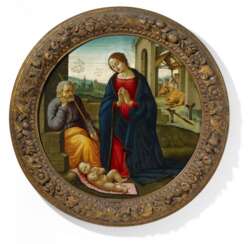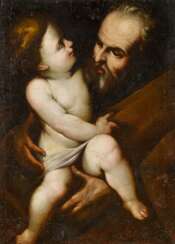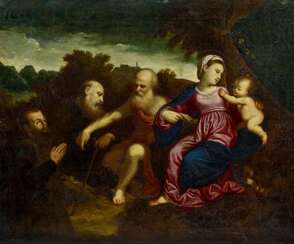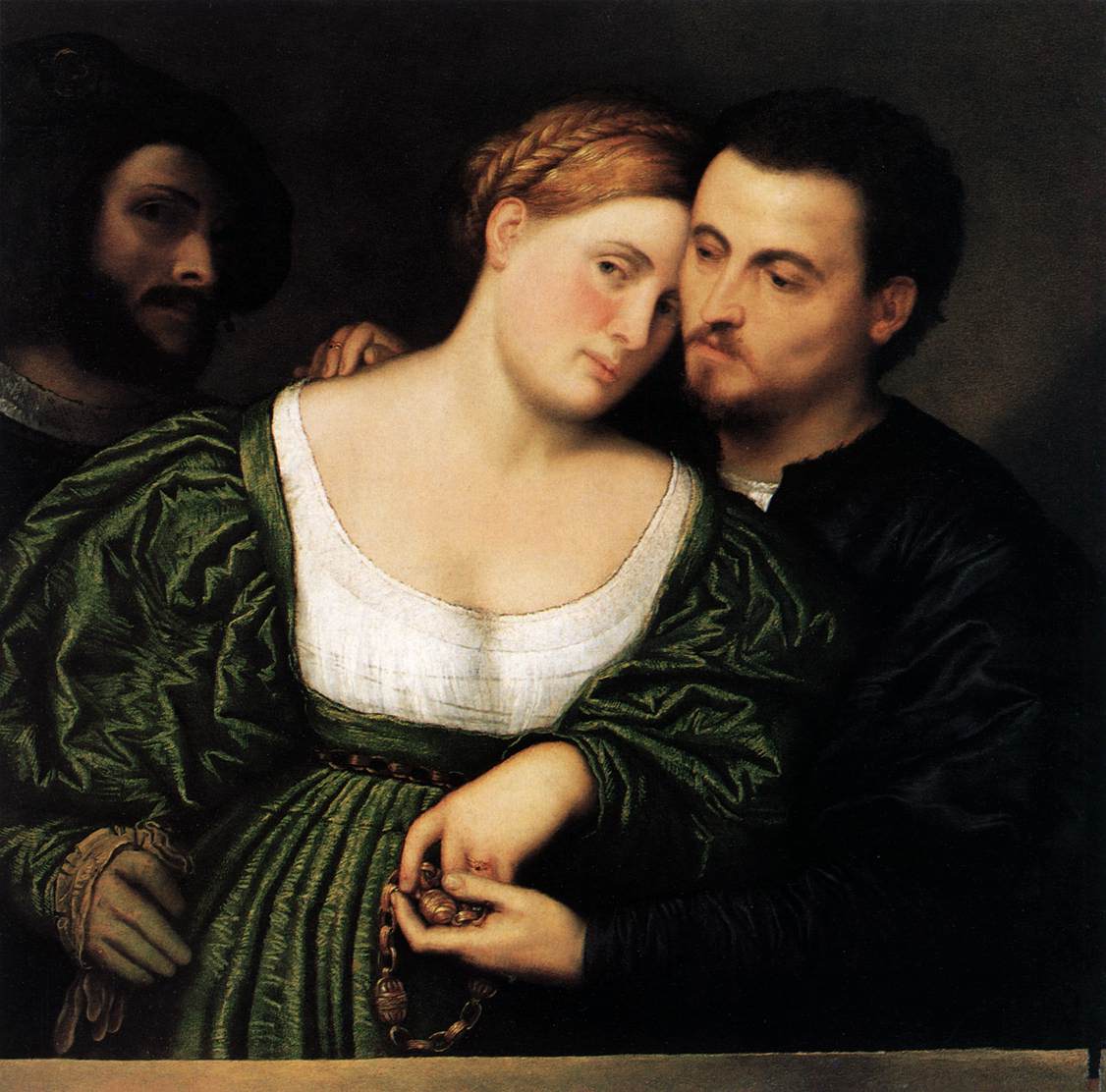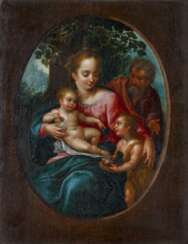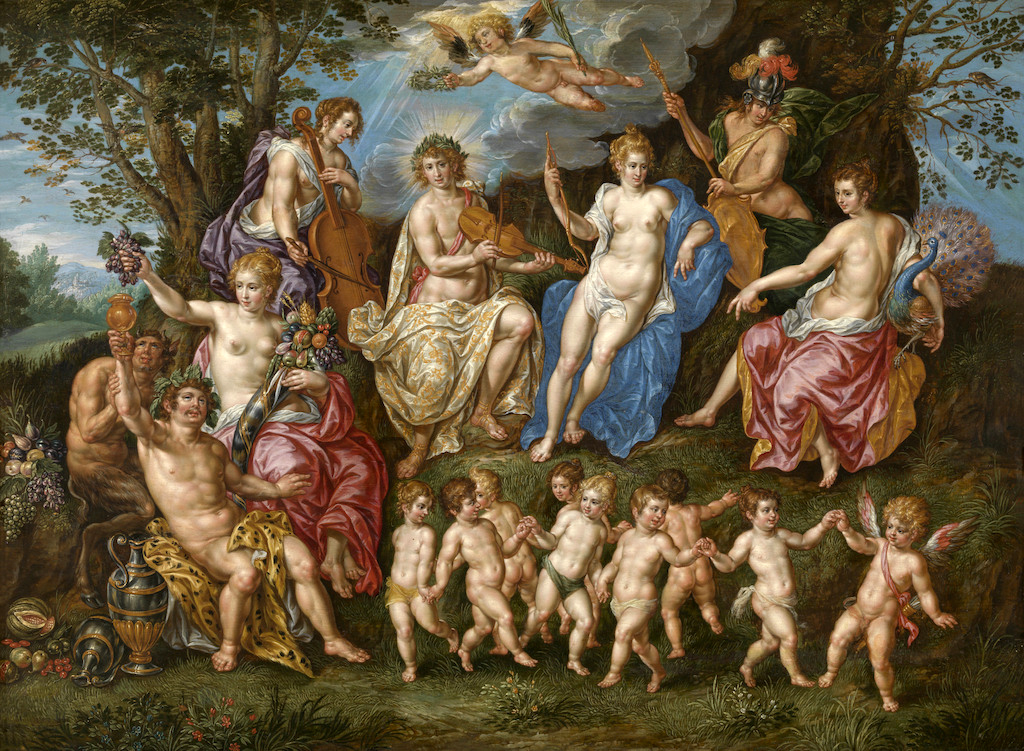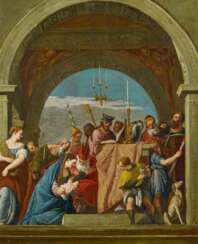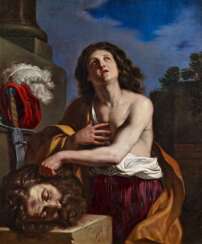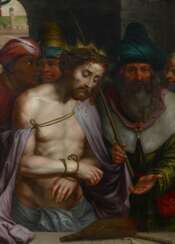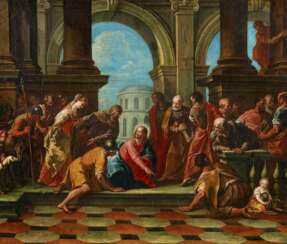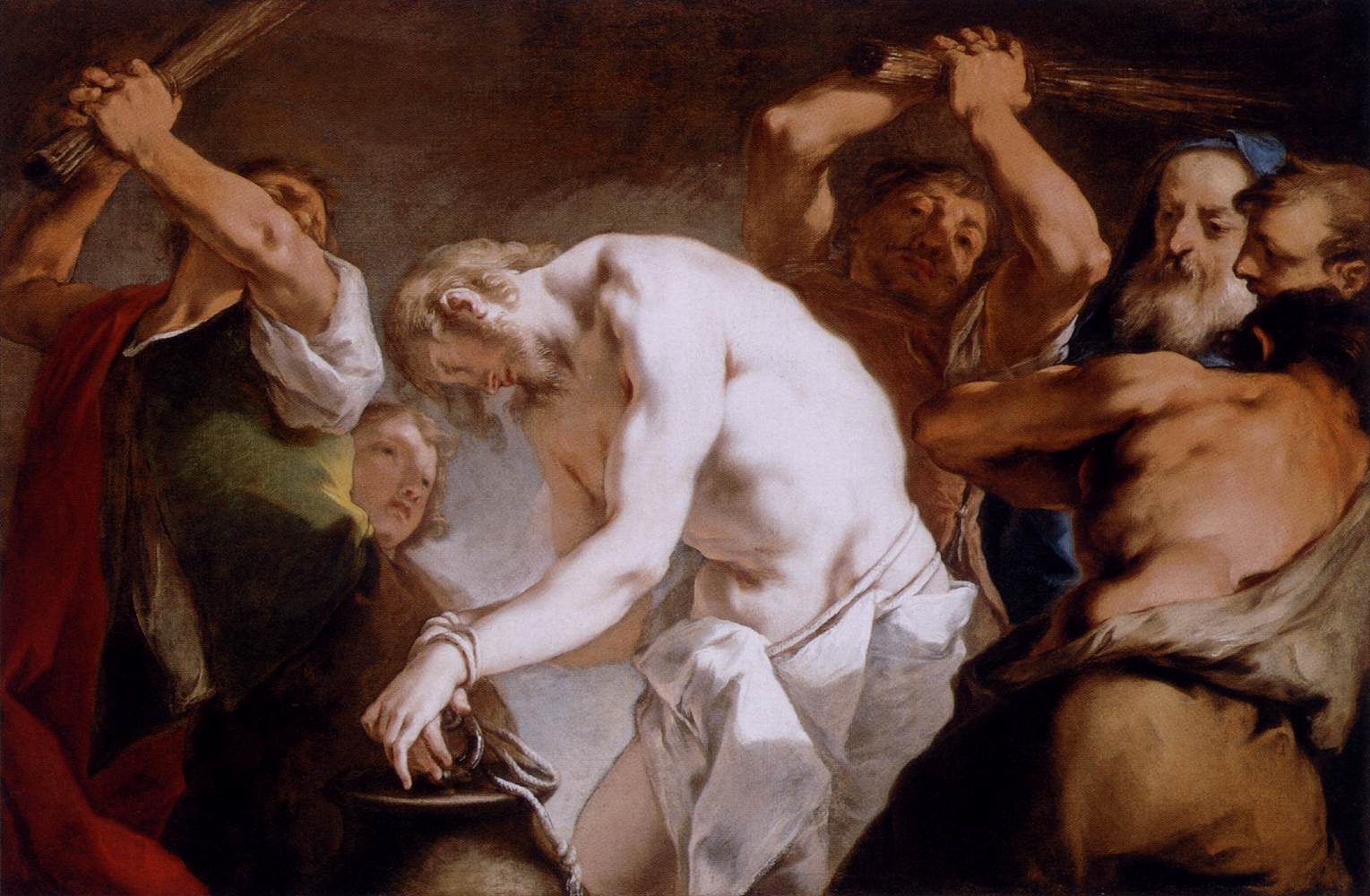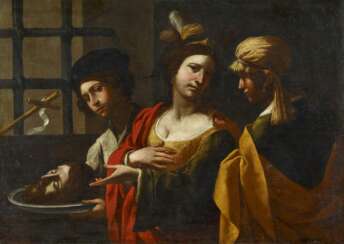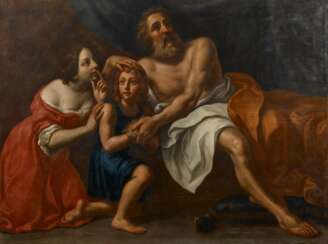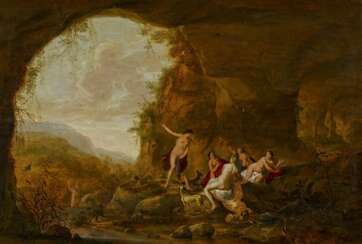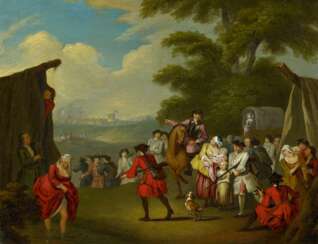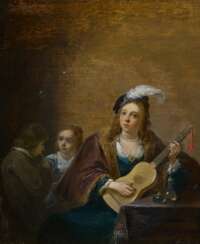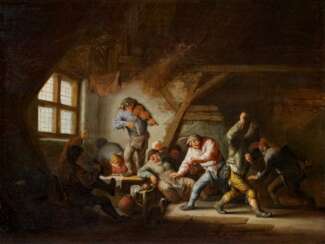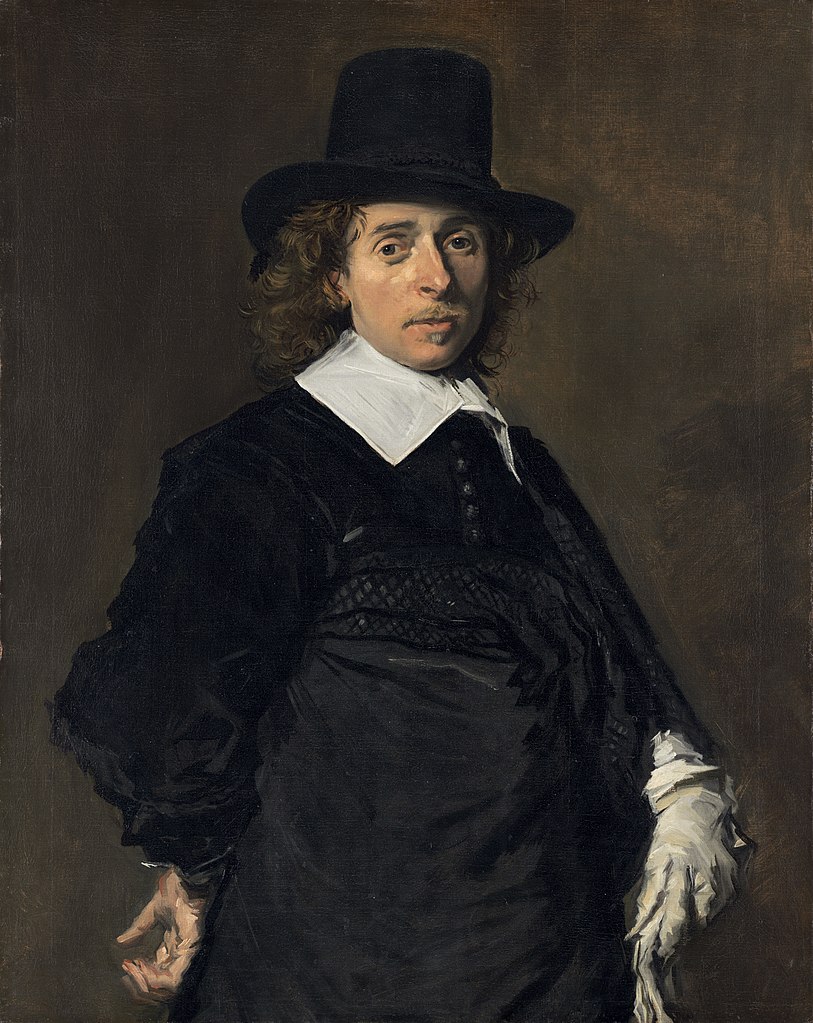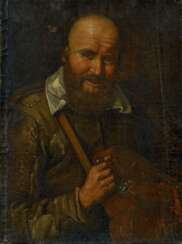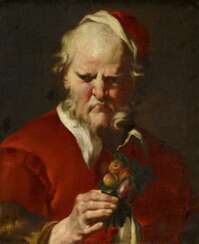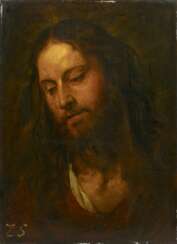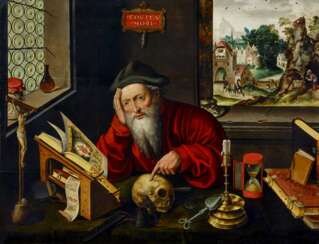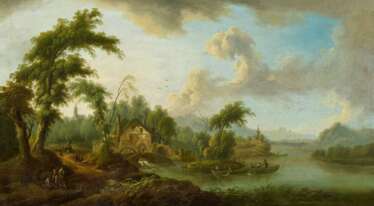
Old Master Paintings — A438 | Ancient art
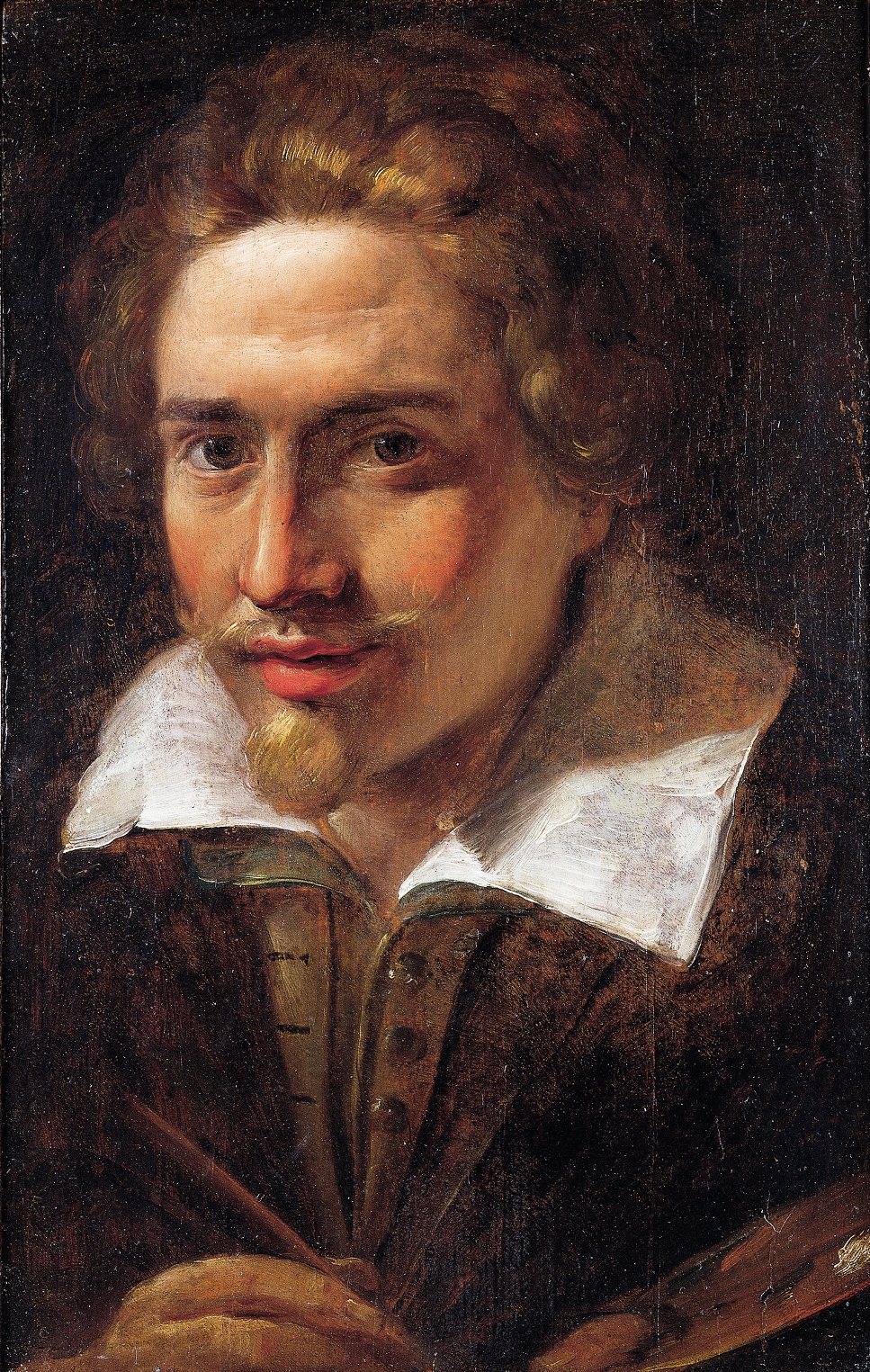
Giulio Cesare Procaccini was an illustrious Italian painter and sculptor of the Baroque period, celebrated for his dynamic and expressive works. Born in Bologna and later moving to Milan, Procaccini's artistry was deeply influenced by the emotional intensity of Mannerism and the vibrant colorism of Venetian painting, signaling the dawn of the Baroque era.
Procaccini's oeuvre includes significant altarpieces such as the "Circumcision" now in the Galleria Estense in Modena, and the "Last Supper" for the Basilica della Santissima Annunziata del Vastato in Genoa. His collaboration with artists like Giovanni Battista Crespi and Pier Francesco Mazzucchelli under the patronage of Cardinal Federico Borromeo highlighted his pivotal role in the Milanese art scene. Moreover, Procaccini's "Ecce Homo" at the Dallas Museum of Art and "The Agony in the Garden" at the Prado Museum in Madrid exemplify his mastery in depicting religious narratives with profound emotion and technical sophistication.
Procaccini's journey through the art world was marked by his initial work as a sculptor, later transitioning to painting, where he left a lasting legacy. Commissioned to paint scenes commemorating the life of Cardinal Carlo Borromeo in Milan Cathedral, his style evolved to exhibit increased clarity and a brighter palette, indicative of his maturation as an artist. His exposure to the works of Rubens and his travels across Italy allowed him to absorb and reinterpret the stylistic elements of Caravaggio, Correggio, and Parmigianino, enriching his own artistic language.
Though not represented in London's National Gallery, Procaccini's paintings grace collections across Europe and beyond, with notable works in the north of England, including "The Mocking of Christ" at Museums Sheffield and "The Raising of the Cross" at the National Galleries of Scotland. These pieces demonstrate his skillful use of color and ability to convey the physical and emotional weight of biblical stories.
For collectors and experts in art and antiques, Giulio Cesare Procaccini represents a fascinating study in the transition from Mannerism to Baroque, embodying the emotional depth and innovative spirit of early 17th-century Italian art. His contributions to the Baroque period remain a testament to his versatility and enduring appeal.
For updates on new discoveries, sales, and auction events related to Giulio Cesare Procaccini, consider signing up for relevant newsletters or alerts. This ensures that enthusiasts and collectors alike are well-informed about the latest opportunities to engage with the magnificent art of Procaccini.
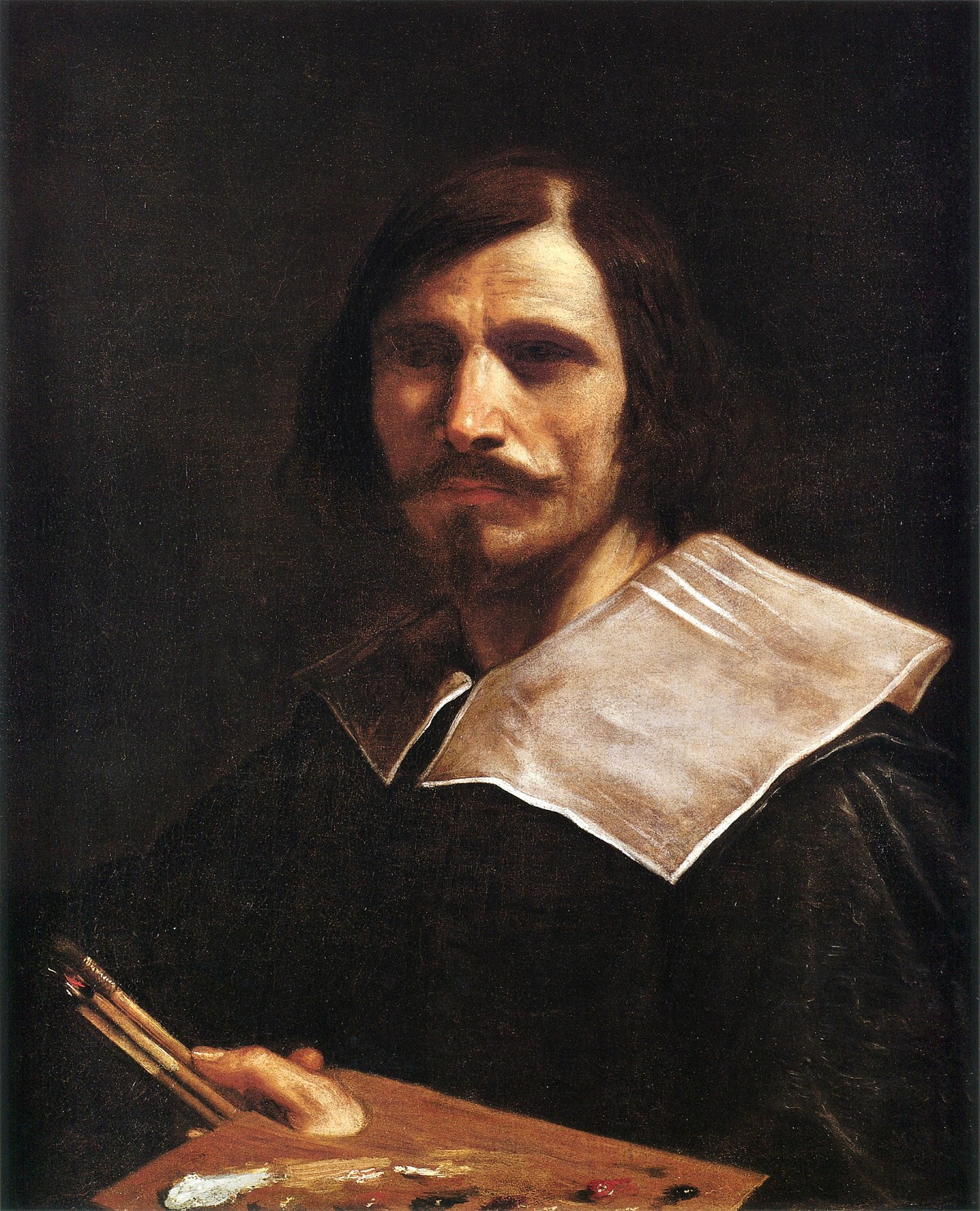
Giovanni Francesco Barbieri, better known as Guercino, was an Italian Baroque painter and draftsman from Cento in the Emilia region, who was active in Rome and Bologna. The vigorous naturalism of his early manner contrasts with the classical equilibrium of his later works. His many drawings are noted for their luminosity and lively style.
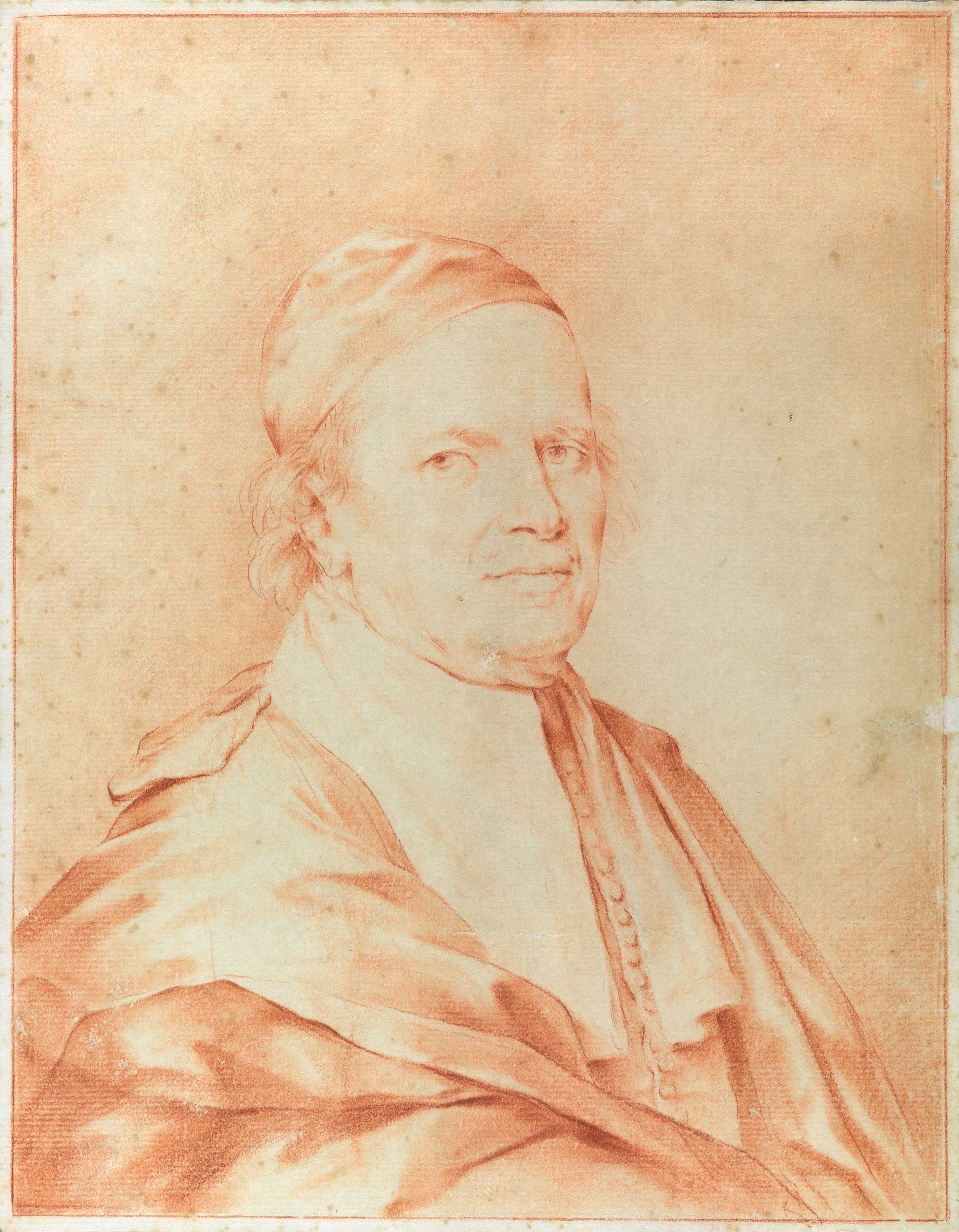
Carlo Cignani was an Italian painter, a representative of the Bolognese Baroque school.
Although he was educated in Bologna, he was more influenced by Correggio. The last 20 years of his life the artist spent in Forli, engaged in painting churches. The fresco "Assumption of the Virgin" in the dome of the cathedral of Forlì was painted by Cignani on the motives of the painting of the dome of the Cathedral of Parma, made by Correggio.
His son Felice (1660-1724) and nephew Paolo (1709-1764) were also artists.
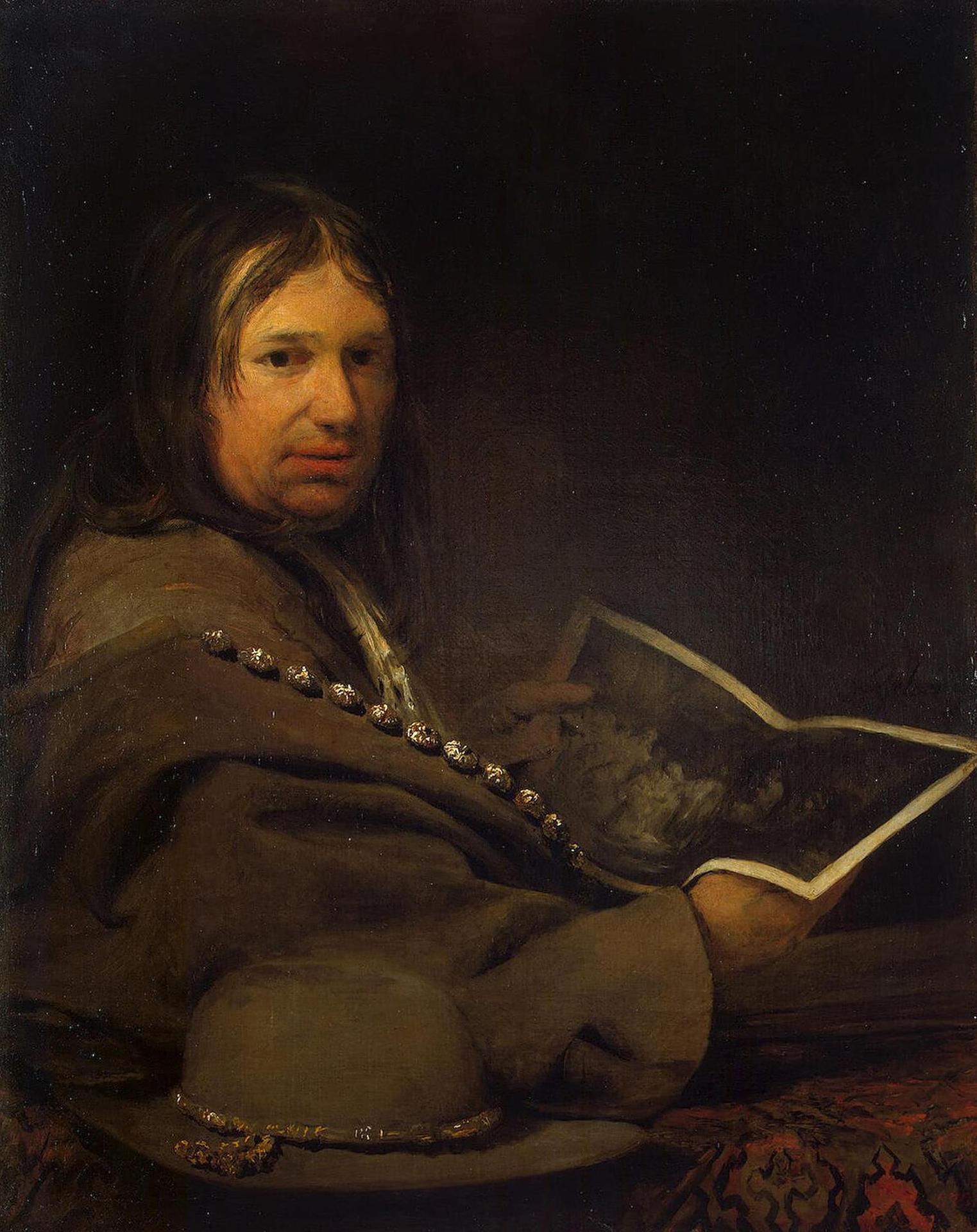
Aert de Gelder was a Dutch painter. He was the only Dutch artist to paint in the tradition of Rembrandt's late style into the 18th century.
As author of biblical scenes and portraits his style was inspired by Rembrandt's, using his artistic ideas, well into the 18th century, without being influenced by contemporary new fashions. From the artistic point of view his work can not be considered as passive imitation of the master; indeed, it stands for inventiveness in the narrative, taste for the theatrical and a strong emotional charge of the characters. All these traits made him one of the most important interpreters of Dutch painting of the late seventeenth century.
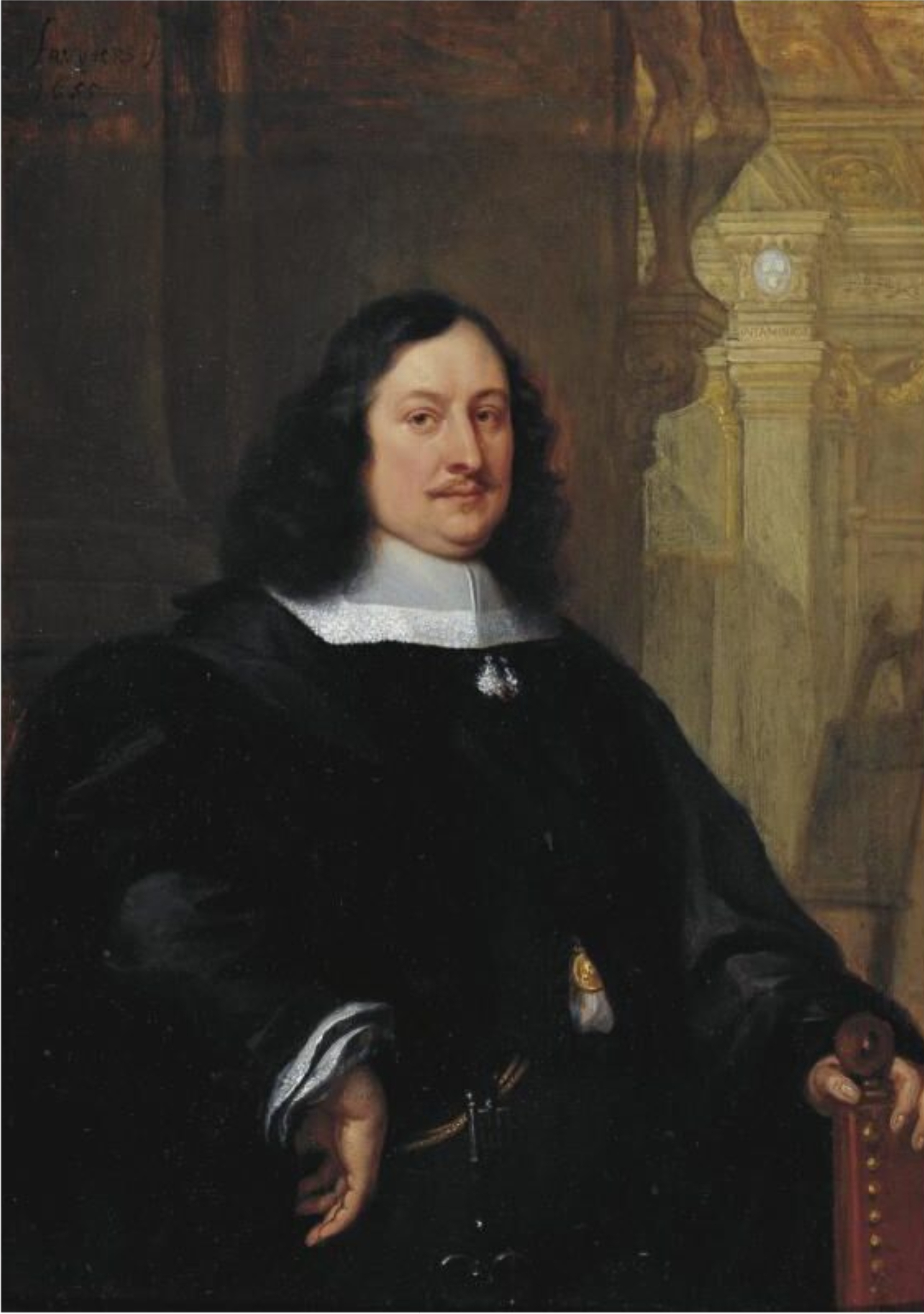
David Teniers the Younger was a Flemish Baroque painter, printmaker, draughtsman, miniaturist painter, staffage painter, copyist and art curator. He was an extremely versatile artist known for his prolific output. He was an innovator in a wide range of genres such as history painting, genre painting, landscape painting, portrait and still life. He is now best remembered as the leading Flemish genre painter of his day. Teniers is particularly known for developing the peasant genre, the tavern scene, pictures of collections and scenes with alchemists and physicians.
He was court painter and the curator of the collection of Archduke Leopold Wilhelm, the art-loving Governor General of the Habsburg Netherlands. He created a printed catalogue of the collections of the Archduke. He was the founder of the Antwerp Academy, where young artists were trained to draw and sculpt in the hope of reviving Flemish art after its decline following the death of the leading Flemish artists Rubens and Anthony van Dyck in the early 1640s. He influenced the next generation of Northern genre painters as well as French Rococo painters such as Antoine Watteau.

Anthony van Dyck, a Flemish painter born in 1599 in Antwerp and passed away in 1641 in London, is celebrated as one of the foremost Baroque painters of the 17th century. His notable contributions to the art world include his exceptional portraits of European aristocracy, as well as his religious and mythological paintings. Van Dyck's early exposure to art was influenced significantly by his apprenticeship with Hendrik van Balen and later, by the profound impact of working alongside Peter Paul Rubens. His mastery was recognized early on, leading him to set up his own workshop by the age of 15.
Van Dyck's journey to Italy in 1621 marked a pivotal phase in his career, allowing him to immerse himself in studying the Italian masters and commencing his successful stint as a portraitist. His style evolved under the influence of Titian, evident from his vibrant use of color and refined modeling of form. Van Dyck's Italian period not only honed his artistic skills but also established his reputation as a painter of consequence.
Upon returning to Antwerp, van Dyck's portraits became highly sought after, leading to commissions from notable figures such as Archduchess Isabella and Queen Mother Maria de' Medici. His role as a court painter further solidified in England under the patronage of King Charles I, where he was knighted and appointed as the principal painter, profoundly shaping the aristocratic character of Charles I's reign through his portraits.
Van Dyck's legacy extends beyond his death, having influenced English portrait painting for over a century. His innovative techniques in watercolour and etching, along with his sophisticated portrayal of subjects, continue to be admired. His art not only showcases his technical prowess but also reflects the cultural and social nuances of his era, making his work a significant study for collectors and art historians alike.
For enthusiasts eager to explore the intersections of art, history, and culture through the lens of Anthony van Dyck's work, staying informed about new discoveries and auction events is essential. Signing up for updates can provide exclusive insights into the world of one of the most influential figures in Flemish art. This subscription ensures that collectors and experts are well-informed of any developments related to van Dyck's oeuvre, enhancing their understanding and appreciation of his contributions to the art world.
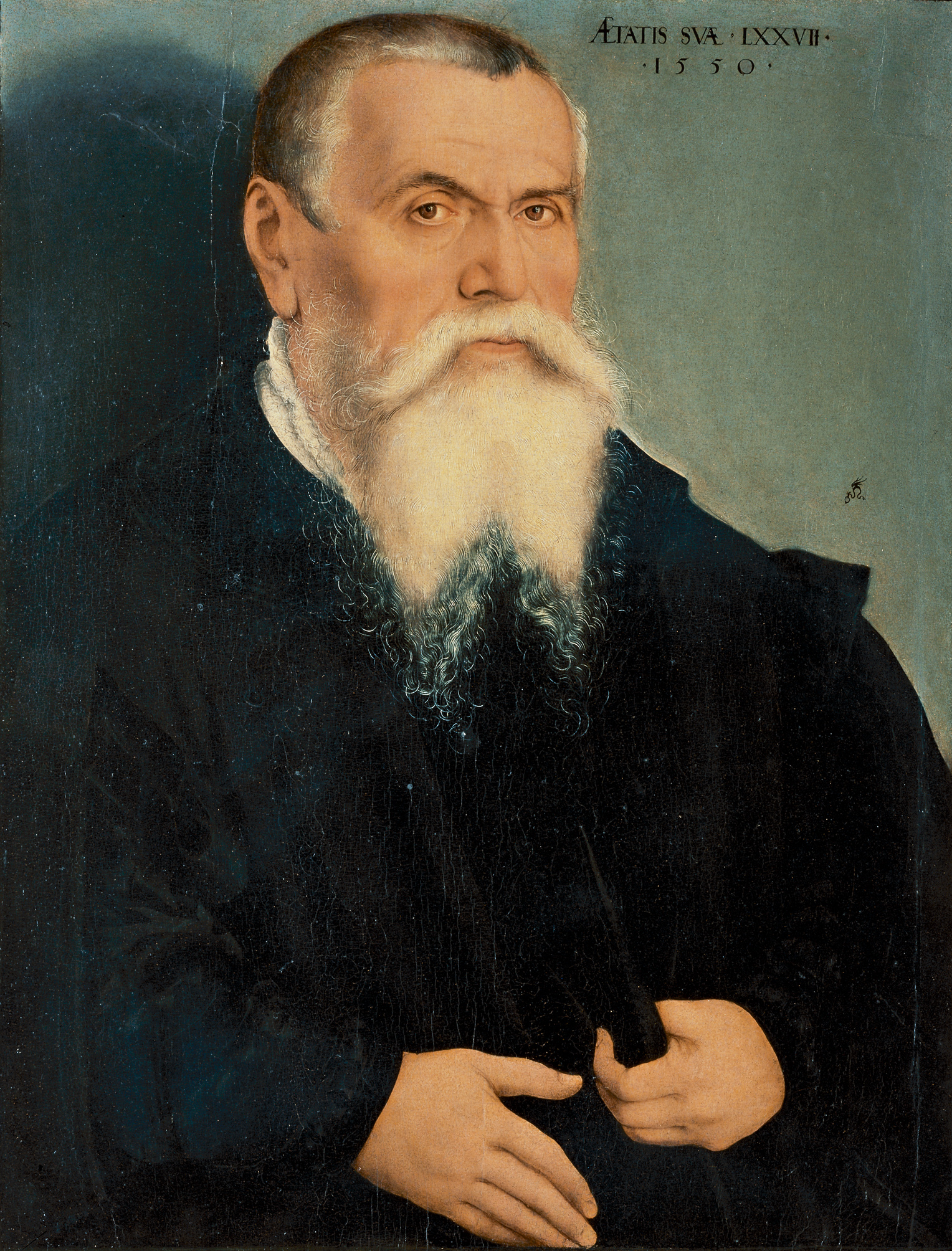
Lucas Cranach the Elder was a pivotal figure in German Renaissance art. As a leading painter of Saxony, his influence spanned across the 16th century, making significant contributions through his paintings, woodcuts, and engravings. His artistic journey began under the tutelage of his father, Hans Maler, and saw him becoming court painter to the Elector of Saxony, where he produced a vast array of works including altarpieces, court portraits, and notably, portraits of Protestant Reformers.
Cranach's artistry was not confined to any single genre. He was renowned for his portraits of the aristocracy, deeply symbolic religious paintings, and engaging mythological scenes. His ability to capture the essence of the Protestant Reformation, notably through his portraits of Martin Luther, showcases his close connection to the movement and his role as a key figure in conveying its ideals through art.
A significant part of Cranach's legacy is his workshop in Wittenberg, which was a hub of artistic production. This workshop produced numerous works that bore his distinctive winged serpent signature, a mark of quality and innovation in the art of the period. Cranach's workshop was known for its efficient operation, enabling the production of a large volume of works that catered to the high demand of his time.
For collectors and experts in art and antiques, Lucas Cranach the Elder's work represents an intriguing intersection of art, culture, and history. His contributions to Renaissance art and his unique portrayal of religious and mythological themes continue to captivate audiences, making his work highly sought after in the world of art collection.
To explore more about Lucas Cranach the Elder's fascinating contributions to art and to stay updated on new discoveries or auction events related to his works, consider signing up for specialized updates. This subscription is designed for enthusiasts keen on delving deeper into the rich tapestry of Renaissance art and history, ensuring they remain well-informed of relevant sales and scholarly insights.
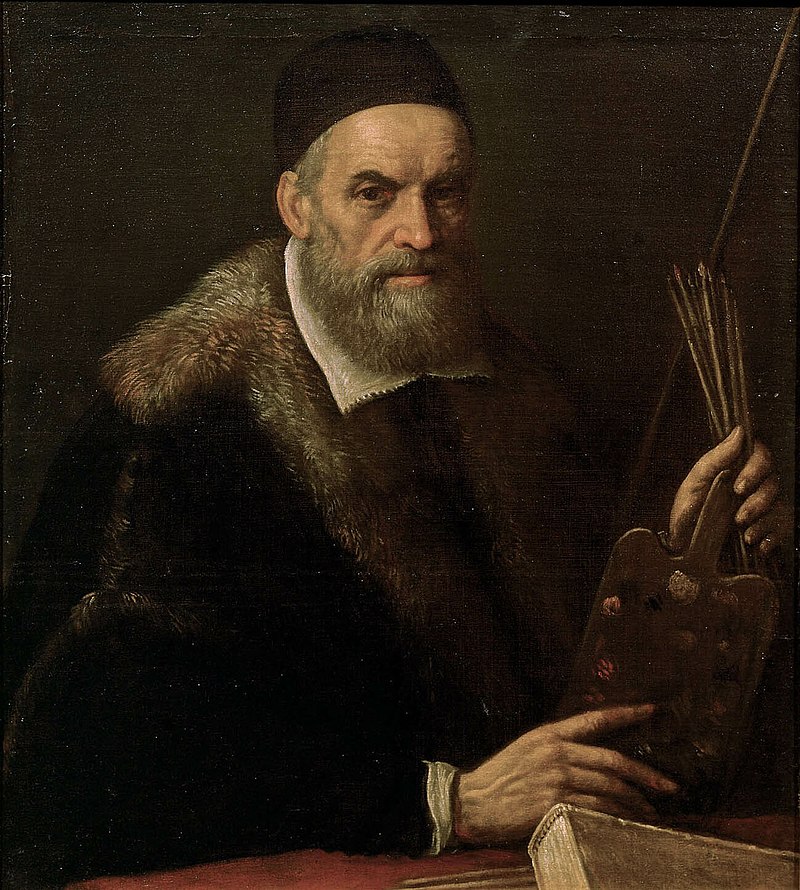
Jacopo Bassano, known also as Jacopo dal Ponte, was an Italian painter who was born and died in Bassano del Grappa near Venice, and took the village as his surname. Trained in the workshop of his father, Francesco the Elder, and studying under Bonifazio Veronese in Venice, he painted mostly religious paintings including landscape and genre scenes. He often treated biblical themes in the manner of rural genre scenes, portraying people who look like local peasants and depicting animals with real interest. Bassano's pictures were very popular in Venice because of their depiction of animals and nocturnal scenes. His four sons: Francesco Bassano the Younger, Giovanni Battista da Ponte, Leandro Bassano, and Girolamo da Ponte, also became artists and followed him closely in style and subject matter.
